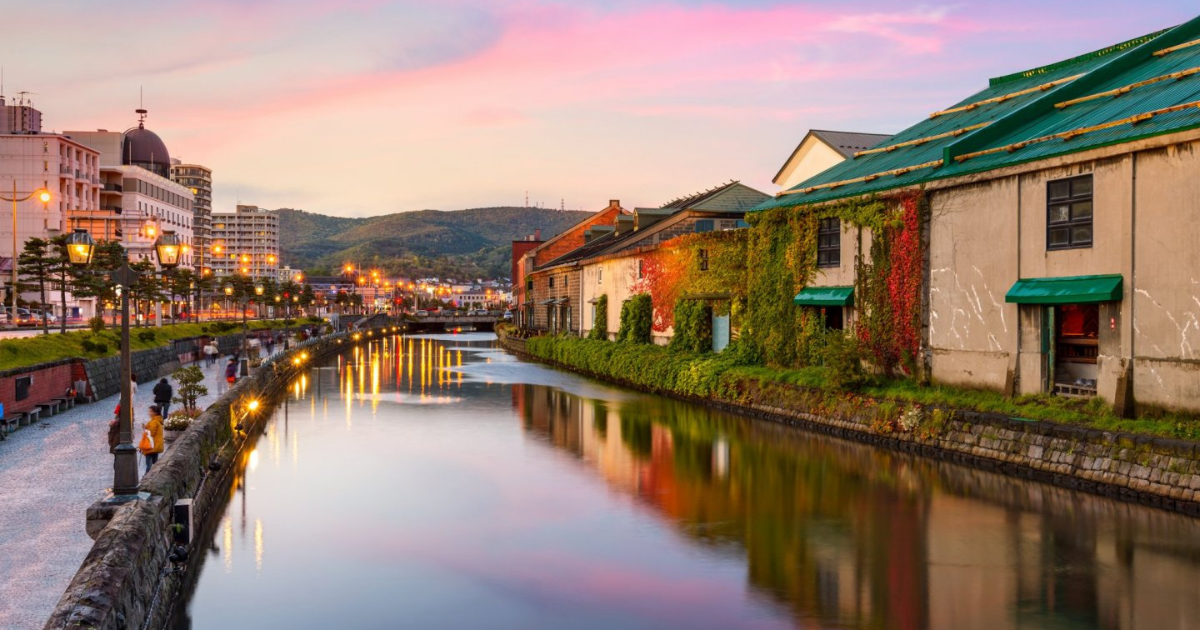When traveling to another country, there are countless things to see and do. But for a food for thought, how does a country practice a safe and healthy environment so that you and everyone else can enjoy their travels and living?
Recently, I had the opportunity to participate in a 2-week study abroad program in Hokkaido, Japan with San José State University. From the beautiful landscape of Hokkaido, to the delicious plates of food, I am going to uncover the amazing public health practices the country goes through to preserve its culture and gorgeous country.
Environmental Differences
In a country where it is almost walkable to any destination, there were plenty of noticeable differences in the public spaces. In the bustling city of Sapporo where I stayed most of the time, there were plenty of convenience stores, restaurants, department stores, and parks.
A main difference that Japan does differently to the U.S. is that there are little to no trash cans in the public with the exception of just a few in certain areas. A surprising reason I learned about why there were no trash cans is that it started as a counter-terrorism measure.[1] Historically, there have been a series of unfortunate events where civil terrorist attacks have occurred with hidden objects. As a way to protect the public, removing trash cans was one of the major measures in preventing something that could contribute to the issue.
Another reason is that waste collection and management can get quite expensive. When service is needed to collect trash throughout the public, this leads to the demand for the labor, thus expenses can get pretty high, especially in large cities such as Sapporo or Tokyo. In the end, not only does this reduce the expense needed to collect waste, but it also serves as an incentive to take trash home which keeps the streets clean and waste free.
Floral Care
Adding onto the cleanliness of the public, Japan’s culture prides itself on making sure they respect the land they live on. As the belief of the land provides, Japan ensures to keep things clean to the best of their abilities.
From the cities that I walked through compared to the states, much of Japan keeps their streets and sidewalks cleaned. Sometimes I would see shopkeepers outside the front with a broom sweeping the ground so that not only is their shop presentable, but also keeps the public clean.
Another observation I noticed was during my trip to the Furano Lavender Fields in Nakafurano. My first impression when seeing the lavender fields and flowers was that they were absolutely gorgeous. Because it was lavender season, the majority of other flowers were also in full bloom. When walking through the fields, I noticed that few of the staff members would keep in check of the flower fields and even go around picking up and cleaning tiny bits of trash. It goes to show that they want to preserve the flowers and make sure they are at their healthiest state when visiting.
Transit
Aside from walking, there are plenty of different methods to traveling around Japan. One of the more popular methods is taking the intricate train system and JR (Japan Rail) line. Taking the bus is also another popular form of transportation when getting around the city. Despite being a small country, there is also still a prevalent amount of cars on the streets as well.
When it comes to taking the public transport system, Japan uses a card based system similar to the Clipper card the BART system uses here in the states. The different types of IC cards or smart card brands throughout Japan are SUICA, KITACA, PASMO, and plenty more.[2] With plenty of cute designs, we used the KITACA card which was a regional card used in Hokkaido with the flying squirrel as its mascot. One of the benefits of these cards was that you could also use them as a currency card where just like a regular payment card, you could purchase drinks and other various items from vending machines that had a tap feature (similar to a debit card with Apple pay).
From what I experienced with the transportation system, it was fairly easy to get used to. By going to the recharging station, I was able to simply add money to my card, tap the gate to get through, then hop onto whatever train to go to a certain station. Because plenty of residents are going on and off the train, it usually takes merely a few minutes to get from one station to another. But of course when rush hour hits, the train carts can get pretty packed at times as well. Aside from trains, IC cards are also available to be used on public bus systems as well.
Etiquettes
I noticed that there were many etiquettes as well when going on the train. One of the few important rules in Japanese culture is being silent or quiet. On the train when there are usually only a few people or when it is packed, it is important to respect everyone’s space and environment by not speaking too loudly on the phone or with someone.
Another important etiquette that I personally really respected was the social etiquette of giving up one’s seat for all elderly. When most seats have been taken (including priority seating), Japan’s culture for respecting the elderly is also taken during transit as it is socially common to give up your seat for any elderly that hops onto the train. For safety reasons, there are also plenty of handlebars and grips for people to hold onto when the train becomes a bit unstable when standing.
When going on the trains, one thing I observed was that they were always clean and well maintained. During the early mornings and afternoons when rush hour is over, both conductors and staff members will go around cleaning both the stations and the train carts to ensure cleanliness.
One of my favorite things that the train carts also have are priority seating for the elderly, soon-to-be mothers, those with a disability, and parents with children. I really appreciated how they were inclusive to ensure all comfortability was met for everyone.
U.S. Consulate/Embassy Collaboration With Japan's Public Health
When it comes to the overall public health topic, my class and I had the opportunity to visit the U.S. Consulate located in Hokkaido where we spoke with a few government officials about what they do and their connections with Japan. It is important to know that the U.S. has many connections with different countries, thus are able to establish consulates and embassies to ensure there is a government representative.
When talking to some of the U.S. representatives, we discussed what it was like working as a diplomatic representative, how well their connection is with Japan, what are some of the ways we can be involved if there is interest in working with them, and what current plans there are when working with Japan. One of the few public health advances that the U.S. and Japan are working on is a better initiative to combat climate change. As Japan is a very technologically developing country, plenty of energy is needed to run it. One of the few ways to improve energy cost is the use of solar panels which are not only sustainable, but are able to preserve and conserve the amount of energy being used.
I personally was able to ask questions about some of the ways the U.S. collaborates with Japan to develop further advances in public health. Fortunately, they established a public health department within the Japanese government that continuously communicates and works with the public health department of the United States, and including other countries. An example of one of their strongest works was during the peak of the COVID-19 pandemic, where they were able to work on various medications and research to help improve the health of everyone in the world.
Though there is so much that I want to share, I believe that I should leave it as a surprise for those who want to travel and discover if given the opportunity to do so. As someone who has only traveled a few times in my life, I for certain want to continue exploring the world, and so should you! There is so much culture out there for us to learn more about. Don’t be afraid to travel as you never know what you might see.
Tips for first time travelers and future travels:
-
Start small by traveling within the country first! There are plenty of great sight-seeing areas in all the states.
-
Research different country's cultures to see what you might find interesting.
-
Buy plane tickets LONG before the travel date. Tickets can get quite expensive the closer you are to the flight day!
-
Check your bank if you can get great travel mileage points through purchases in every day life. These points can help reduce plane ticket prices immensely.
-
Ask other travelers on what great places there are to visit and are worth while.
-
Get out your comfort zone and experience what different cultures have to offer compared to how you usually live at home.
Though traveling can get expensive, there are plenty of options to experience what its like to travel outside from your home. From the different cities to the different countries, there are amazing things to see all around the world to not just widen your experience, but to see what history has to offer. Who knows, maybe you will find a new adventure just around the corner.
Be happy, be healthy, and safe travels!
Please remember to comment and post any health and travel questions, or contact us directly!














